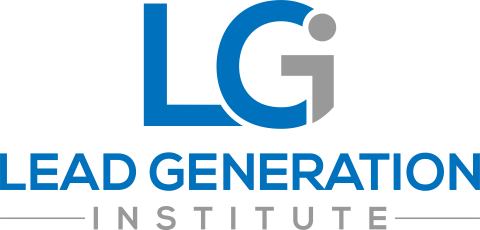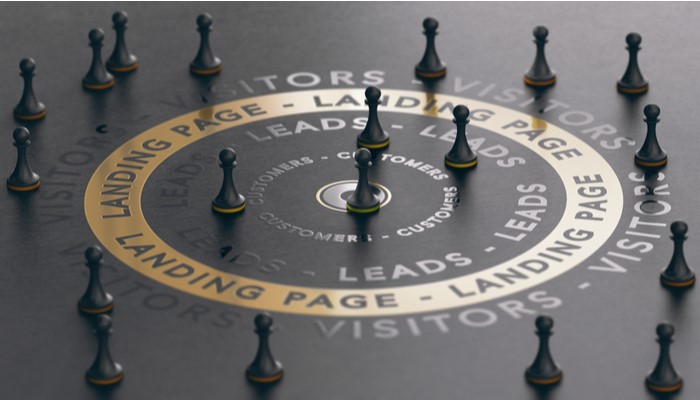Setting up an effective lead generation campaign is top-of-mind for the majority of B2B marketers out there. In fact, 68% of B2B organizations say that increasing the number of quality leads is a top priority, followed by increasing lead volume with 55%. These numbers also show that generating high-quality leads is a big B2B challenge. Among the major reasons for this is a lack of resources, as well as a general lack of understanding of how to implement a proper lead generation strategy.
In this article, we will highlight the tools, as well as the techniques needed to create a B2B lead generation campaign capable of feeding your sales funnel with ample, quality leads.
Your B2B Lead Generation Strategy Martech Stack
A marketing technology (martech) stack is comprised of a group of technologies used by marketers to execute, automate, analyze, and optimize their marketing efforts. The focus of these marketing technologies is to improve all internal communications and collaboration, streamline processes, and measure the impact of their marketing activities across the entire customer lifecycle. This also helps them reach out to new customers in new and innovative ways. A 2017 survey from Leadspace and the Marketing Technology Industry Council where over 270 B2B companies responded, showed that the average number of martech products in a given stack is 16. That’s a lot of technology to buy, learn and manage. Not to mention that, [bctt tweet=”on average, companies with revenue exceeding 500 million also have 25 people managing these technologies and campaigns.” username=”LeadGenInst”]
Your typical B2B lead generation strategy martech stack will include some of the following tools:
- CRM Software – Customer relationship management (CRM) encompasses multiple apps that help manage customer data and interaction, provide access to business information, and offer marketing and sales automation. A CRM system is the central hub of the entire martech stack.
- Content Management System (CMS) – This is another set of apps used to create and manage B2B content, and they can be used for content syndication. Some CMSs include:
- Landing Pages and Website Optimizer Software – Common features of landing page and web form software include templates, reporting, dynamic content, A/B testing, as well as CRM and email integration.
- Social Media Marketing – These tools will create, manage, and track all social media marketing efforts.
- Marketing Automation Platform (MAP) – MAPs will automate many marketing processes. They can gather customer information, generate a customer profile, personalize messages, and integrate with your email and social media.
- Ad Tech – These are digital solutions that allow you to supplement organic traffic with paid advertising and increase top-of-the-funnel traffic. Look at:
- Live Chat Tools – These tools provide you with the possibility of providing customer support in real-time, boosting your conversion rate. They also track customer activities on your website and offer you reporting capabilities.
- Webinar Software – Webinars are also great B2B lead generators. These tools can help you implement them.
It is, however, crucial that you only start building your lead generation software stack once you have your digital marketing strategy put in place. You will first have to determine where you are, who your target audience is, and what kind of content you need to create to reach them. Once you’ve mapped this process, you will have a better understanding of what lead generation tools you will need to drive your B2B lead generation strategy.
B2B Data Preparation
With a comprehensive lead generation strategy put in place, and with the right tools selected, it’s time for data preparation. This refers to the process of manipulating and processing the raw data coming in from different touch points between your brand and your potential customers. Data preparation is a technique for turning unstructured data (dark data) into structured data that’s easy to understand and analyze. This needs to be the first step in any B2B lead generation process. You can get lost fast when it comes to data preparation but at a minimum, you will want to standardize and normalize your data for personalization. One tool we use a lot is called KuTools which helps with capitalization issues for first, last name and/or company name (proper case).
Developing Buyer Personas
The next step is to develop your buyer personas. These are the ideal representations of your ideal customers. But keep in mind that within your typical business, there can be anywhere between six to seventeen decision-makers. You should do your best to identify all of these key stakeholders to get the most out of your lead generation strategy. Among these personas, we can include financial authorities, end-users, and decision-makers.
Common questions you should ask yourself about these personas should include:
- What role does this person play in the purchase decision?
- What are their challenges and responsibilities?
- How much purchase authority do they have?
- To whom do they report?
- What are their preferred means of communication?
- What other vendors do they work with?
- Where do they get their industry information?
B2B Content Mapping
Content mapping is a marketing tactic that helps B2Bs outline how each piece of their content supports the buyer journey. It also helps organizations visualize their audience’s needs and connect the content to every stage of the buyer’s journey.
Putting together a content map will help B2B companies determine where in the funnel the audience engages with every piece of content. It will also show how your content allows your customers to get what they need at every stage, as well as how it guides them through the funnel more easily.
But before you start content mapping, you need to conduct an audit of all the content you currently have. This way, you will avoid creating any duplicate content assets at every stage of the buyer journey.
The Buyer Journey Map Content Analysis
The buyer journey map will outline the company’s purchase funnel. There are a total of five stages, each with its own type of content able to attract, convert, and move your leads down the funnel.
- The Learning Stage – ” I think I have a problem.” – This stage requires top-of-the-funnel content that attracts potential leads to your brand. Blog posts, infographics, videos, visual content, social media content, podcasts, etc. will be used during this stage.
- The Solving Stage – “How do I solve this problem?” – At this stage, B2Bs need to use content that keeps their audiences interested in their brand until they are ready to buy. Aside from the aforementioned types of content at the learning stage, email newsletters will keep your audience engaged and moving through the sales funnel.
- The Comparison Stage – “Am I solving this problem the right way?” – This stage requires middle-of-the-funnel content that will inform customers as they decide on a product and brand. Lead magnets in the form of whitepapers, eBooks, case studies, and webinars will work here. Testimonials, product sheets, and landing pages are also welcomed additions.
- The Purchasing Stage – “Help me make a purchase decision.” – As they are preparing to buy, leads will interact best with bottom-of-the-funnel content. Social proof in the form of reviews and testimonials, as well as product videos, FAQ pages, landing pages, product updates, and use cases, which will help reassure them about the decision.
- The Loyalty Stage – “After purchase and as a means of maintaining a lasting relationship.” – User guides, email newsletters, surveys, social media posts, and coupons will help with your lead nurturing, as well as turn your buyers into loyal, repeat customers.
Once all of these steps are finished, you can start implementing your lead generation campaign. If you want to learn more about B2B lead generation and how to successfully implement it into your business, subscribe to our newsletter and get the latest delivered to your inbox.




